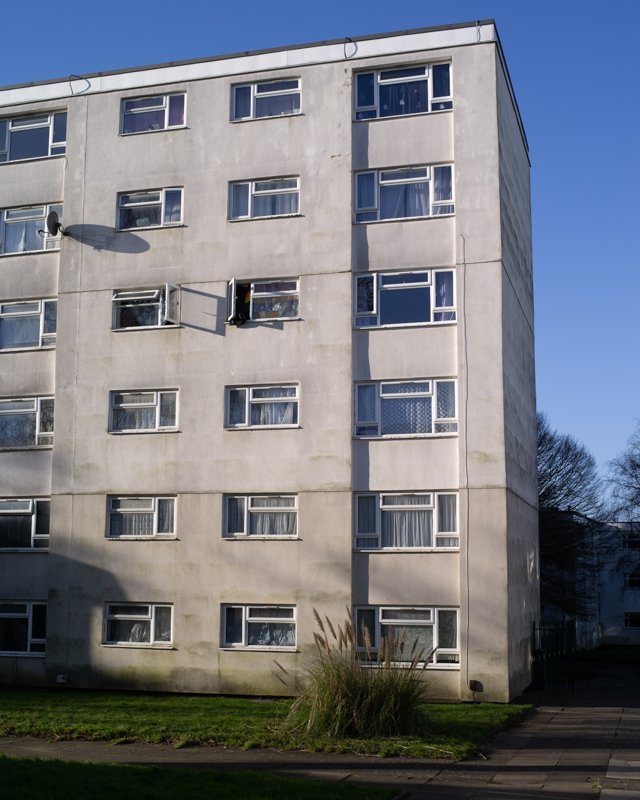The term cladding is a broad one: the fire protection agency defines it as a non-load bearing “outer skin applied to a high rise building to increase thermal energy efficiency or improve aesthetics, while not adversely affecting weather resistance.” [1]
When used to increase thermal efficiency, cladding can cut down the conductive heat loses from a building by increasing the effective thickness of the outside wall. This heat loses may be further reduced by the presence of an empty space between the cladding layer and the outside wall of the building. [2]
Despite its broad meaning, the term has become inextricably linked with one horrendous event in recent history: the Grenfell tower fire.
The fire, the deadliest since the great fire of London in 1666, claimed 72 lives in June 2017. The resulting inquiry found that “The principal reason why the flames spread so rapidly up, down and around the building was the presence of the aluminium composite material (ACM) rainscreen panels with polyethylene cores, which acted as a source of fuel.”[3]
The aluminium composite material (ACM) is a particular type of cladding that comprised of a layer of polyethene sandwiched between two thin sheets of aluminium. Polyethene is a highly flammable material, with one fire safety engineer stating that “a kilogram of polyethylene is like about one and a bit, one and a half litres of petrol.”[4]
To make matters worse, there was a layer of insulation made of “polyisocyanurate (PIR) and phenolic foam” between the walls of Grenfell tower and the cladding[5]. The phase one inquiry concluded that this layer of insulation also contributed to the rapid spread of the fire and further investigations revealed that the insulation was known to released toxic gases including hydrogen cyanide and carbon monoxide when burnt.
After the fire many people (myself included) were horrified that such a dangerous substance had ever been allowed to be used as a building material and were confused how this could possibly be legal? This confusion was greatly heightened when it emerged that similar cladding had been linked with other horrendous fires in many other buildings, including ones in Dubai, Australia and the UK.[6],[7]
While the full details of the failures in appropriate legislation and testing are quite complex (although an excellent account of them may be found in the Inside Housing “Paper trail” series), some of the many factors that led to the appalling events of the Grenfell fire were the relaxation of building regulations in 1985 and the questionable impartiality of the facility where fire safety tests were carried out, combined with the unceasing drive of local authorities to save money on social housing construction.
These failings have had wide ranging and hugely detrimental ramifications, with hundreds of buildings in the UK found (or suspected) to have dangerous cladding. This had led to ongoing battles between leaseholders, freeholders, building management companies and the government about how the cladding can be removed (and who can pay for this work). Many people finding themselves unable to move (with their properties now worthless due the presence of cladding) and thus stuck in potentially unsafe homes.[8]
Two buildings publicly listed in Northampton as needing remedial work for fire cladding.
The Department of Levelling Up, Housing, and Communities (DLUHC) states that “At the end of January 2024, there are 3,972 residential buildings 11 metres and over in height identified with unsafe cladding”. While some of these buildings have started or completed remedial work, over half have yet to begin remediation works.[9]
Diagram taken from [9]
So… to summarize the housing market in 2024… we have large numbers of people who will never be able to afford to buy their own home and, of the ones who do, a substantial number have ended up in homes that might have dangerous, perhaps even fatal, defects. Surely a sign of a market that has gone past crisis point and now needs large scale radical reform?
Photographs taken by the wonderful Chrissy Osborne
[1] https://www.thefpa.co.uk/advice-and-guidance/advice-and-guidance-articles/what-is-cladding-
[2] https://www.cyberphysics.co.uk/topics/heat/heat_travel/cavity_wall.htm
[3] https://assets.grenfelltowerinquiry.org.uk/GTI%20-%20Phase%201%20report%20Executive%20Summary.pdf
[4] https://www.journeyman.tv/film_documents/7190/transcript/
[5] https://www.insidehousing.co.uk/news/the-paper-trail-the-failure-of-building-regulations-55445
[6] https://www.theguardian.com/uk-news/2017/jun/15/cladding-in-2014-melbourne-high-rise-blaze-also-used-in-grenfell-tower
[7] https://assets.grenfelltowerinquiry.org.uk/LFB00031816_Probyn%20Miers%20Article%20Entitled%20_Fire%20Risks%20from%20External%20Cladding%20Panels%20-%20A%20Perspective%20from%20the%20UK_.pdf
[8] https://endourcladdingscandal.org/about-us/
[9] https://www.gov.uk/government/publications/building-safety-remediation-monthly-data-release-january-2024/building-safety-remediation-monthly-data-release-january-2024


